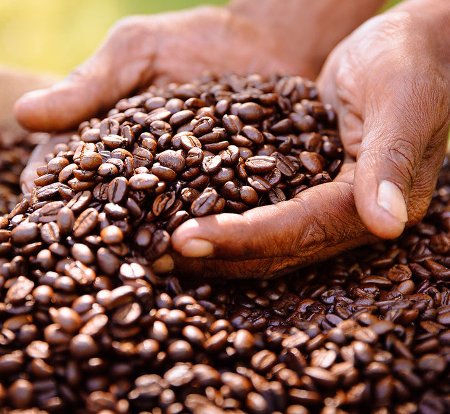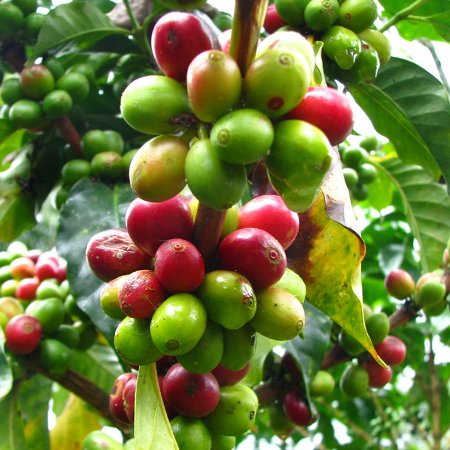





Botanical name Coffea arabica L.
Source Seeds
Origin Brazil
Processing Method Cold Pressed
Color/Consistency Dark brown liquid
Aromatic Summary / Note / Strength of Aroma powerful rich aroma of fresh ground roasted coffee beans
Blends With Ambretee Seeds, Amyris, Blasam of Peru, Black Pepper, Clove Bud, Cocao Absolute, Ginger Fresh, Jasmine Grand Absolute, Labdanum Absolute, Lavender Bulgarian, and High Attitude, Patchouli Dark, Sandalwood Absolute, Vanilla Bourbon Co2, Vetiver.
Product Abstract
Coffea Arabica is the earliest cultivated species of the coffee tree and still the most widely grown. All fine specialty coffees come from Coffea Arabica, which produce approximately 70% of the world's coffee, and are dramatically superior in quality to the other principal commercial coffee species. All the coffee now grown in the Americas originated from one tree in a Dutch botanical garden. Among other possibilities, it is thought that the name 'coffee' comes from Caffa, an Abyssinian province. It can be burned like incense as a room deodorizer, and is known to be loaded with flavonoids and antioxidants. Because this essential oil has a slightly thick consistency, we would recommend placing the bottle in a very hot water bath, changing the water frequently, and once it is back to the liquid state, be sure to shake it gently before use.
History
According to legend, ancestors of today's Oromo people in a region of Kaffa in Ethiopia were believed to have been the first to recognize the energizing effect of the coffee plant, though no direct evidence has been found indicating where in Africa coffee grew or who among the native populations might have used it as a stimulant or even known about it, earlier than the 17th century. The story of Kaldi, the 9th-century Ethiopian goatherd who discovered coffee when he noticed how excited his goats became after eating the beans from a coffee plant, did not appear in writing until 1671 and is probably apocryphal.
Extraction Information
Coffee berries and their seeds undergo several processes before they become the familiar roasted coffee. Berries have been traditionally selectively picked by hand; a labor-intensive method, it involves the selection of only the berries at the peak of ripeness. More commonly, crops are strip picked, where all berries are harvested simultaneously regardless of ripeness by person or machine. After picking, green coffee is processed by one of two methods—the dry process method, simpler and less labor-intensive as the berries can be strip picked, and the wet process method, which incorporates fermentation into the process and yields a mild coffee.
Common Usage
Caution
Do not take the coffee essential oil internally. Kids and pregnant women should not use it without a physician’s approval. You also need to see if you are allergic to it before applying the oil to the skin.
Major Components
Density 0.92-120 g/ml 0.9477
Moisture < 2.0% 0.99
Acid value < 5.0 g/100 3.2
Palmitic acid 30 - 36
Oleic acid 7.5 - 10.5% 8.14
Stearic acid 7.5 - 9.5 7.28
Linoleic acid 40 -46% 41.72
Linoleic acid 2.0(max) <1.00
Arachidic acid 2 - 4 2.38
Solubility in water insoluble
Solubility in alcohol soluble